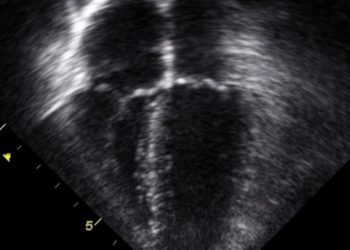Hyperkalemia rare among healthy women taking spironolactone for acne
1. Hyperkalemia rates were similar between women taking spironolactone compared to those who were not.
Evidence Rating Level: 2 (Good)
Study Rundown: Spironolactone is an androgen receptor antagonist that treats acne as well as endocrine dysregulation. Due to the worrisome side effect of hyperkalemia, electrolyte levels are frequently monitored in patients taking this medication. However, it is unclear whether the prevalence of spironolactone induced hyperkalemia necessitates routine monitoring as such testing is costly and may discourage its usage. These authors sought to estimate the prevalence of hyperkalemia in young women taking spironolactone for acne compared to those not on the drug. Authors found that the rate of hyperkalemia among patients taking spironolactone was similar to the baseline rates of hyperkalemia in the same patient population. A strength of this study was that hyperkalemic episodes were followed to determine the outcome of the abnormal lab value. A weakness was that participants only came from two hospitals which may alter the studies overall generalizability.
Click here to read the study in JAMA Dermatology
Relevant Reading: Efficacy and tolerance of acne treatment using both spironolactone and a combined contraceptive containing drospirenone
In-Depth [cross-sectional study]: Data on 974 healthy young women taking spironolactone for acne from Brigham and Women’s Hospital and Massachusetts General Hospital were evaluated for hyperkalemia. Data was obtained via a clinical data repository from December 2000 through March 2014. To determine a baseline rate of hyperkalemia in this population demographic, 1,165 healthy women not taking spironolactone were also assessed. Among patients with primary acne, potassium was checked in 56.4% compared to 74.9% in patients who were taking spironolactone that had an endocrine disorder with secondary acne diagnosis (p<0.01). Testing found that those taking spironolactone had a 0.72% (13 cases) rate of hyperkalemia compared to 0.76% in healthy patients not taking spironolactone. Of the 13 cases with high potassium levels while on the medication, six of the patients regressed back to normal levels after repeat testing was performed while the other 7 patients’ levels were not acted upon.
Image: PD
©2015 2 Minute Medicine, Inc. All rights reserved. No works may be reproduced without expressed written consent from 2 Minute Medicine, Inc. Inquire about licensing here. No article should be construed as medical advice and is not intended as such by the authors or by 2 Minute Medicine, Inc.







![Polyethylene glycol superior to lactulose for hepatic encephalopathy [HELP trial]](https://www.2minutemedicine.com/wp-content/uploads/2014/09/cirrhosis-e1411355076133-75x75.jpg)